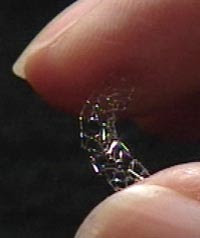Shuchman. “Trading Restenosis for Thrombosis? New Questions about Drug-Eluting Stents”. The New England Journal of Medicine. 355. November 9 (2006): 1949-1952. Print
http://nejm.highwire.org/cgi/content/extract/355/19/1949
Up to this point, drug-eluting stents have had a golden reputation. They had proven to be able to reduce both emergency cardiac surgery and additional angioplasty. They are also associated with substantially lower restenosis rates than bare metal stents as proven by prior papers. At the time of this paper (2006), more than 90% of angioplasty procedures used drug-eluting stents rather than bare metal stents and more than 6 million patients have drug eluting stents in their arteries
However, in this editorial Shuchman reviews the growing concerns with drug-eluting stents: late thrombosis. “Late stent thrombosis (LST)” is defined as occuring 3 to 6 months after the surgery, while “very late stenosis thrombosis (VLST)” is greater than 6 months. After tracking patients from early clinical trials researchers have discovered that thrombosis is a major concern. For example, four years of data on nearly 3500 patients randomly assigned to receive a drug eluting stent (Taxus) or a bare metal stent has shown the risk of thrombosis formation 6 months after Taxus stent placement. The difference in risk increased by .2% per year, so 3 years after stent placement there is a .5% higher risk in Taxus over the bare metal stent. These reviewers suggested that there might be an increased risk of myocardial infarction and death associated with stent thrombosis.


No comments:
Post a Comment